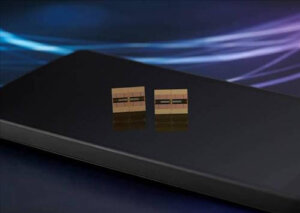While 3D IC production is underway for memory devices, some say demand for 3D ICs is still years away. Could both be right, or are we getting mixed messages? Today’s news from SEMICON Taiwan, in which a DigiTimes reporter quoted Mike Liang, president of Amkor Technology Taiwan as saying that 3D IC parts won’t be in demand for another three years, threw a bit of cold water on excitement generated by recent announcements from Samsung, SK hynix, and Micron that memory stacks using TSVs are going into production much sooner than that. For those who missed my intro in yesterday’s weekly update, I’ll summarize the news again here: Last week, Samsung announced it is going into production with its 64GB 3D DDR4 DRAM module, which is based on through silicon via (TSV) technology. According to a post in PC World, the technology targets server applications. As the largest capacity DRAM module available, it is expected to improve application performance because data will be kept in memory longer so that bits don’t have to be transferred as often between DRAM and other components such as storage. According to a Samsung press release, the new 64GB TSV module performs twice as fast as a 64GB module that uses wire-bond packaging, while consuming approximately half the power. While this is the first Samsung product to go into production using TSVs, the company introduced its version of Wide I/O memory with TSVs — dubbed Widcon technology — back in November, 2013 and showcased it at CES 2014 in January. According to the Samsung Exynos web site, Widcon relies on TSV interconnects to stack memory directly on the ARM processor, for memory bandwidth improvements up to 17GB/s over the current package-on-package (PoP) implemented. This video explains it well. The company is targeting its next-generation Exynos Octa 5 processor for implementation of Widcon in mobile devices, but at this point has made no product announcements. In a January post on ExtremeTech, it was reported that Widcon is “in the prototype stage, with test chips successfully manufactured in-house, but don’t expect to see a shipping solution until 2015.”

Just today, Korean news agency, Yonhap, reported that SK hynix announced development of “the industry’s fastest mobile dynamic access memory (DRAM) chip that is four times faster than the existing Low Power DDR4 (LPDDR4)”. This technology, dubbed Wide IO2, will also implement TSVs. Samples are with SoC customers, and the company intends to mass-produce the chips next year (2015). Considering that Micron expects to go into volume production with the Hybrid Memory Cube (HMC) in early 2015, it seems the memory race for 3D stacks is well underway. With all this going on, it’s hard to buy a statement that 3D IC parts won’t be in demand for 3 years. Liang cites the cost of production as the cause, and that “only a few specific applications that require extremely high performance ICs require the use of 3D ICs, but the amount of such 3D ICs is not sufficient enough to support a full production line.” As Amkor has otherwise been very vocal about its 3D IC production readiness, this is surprising. I would hedge a guess that Liang was talking specifically about stacking logic devices. If that is indeed the case, then it goes in line with the product roadmaps we’ve been seeing a lot lately. Let’s just not lose sight of the traction 3D IC production is gaining in the memory market, which is a very significant step in the overall march to HVM 3D ICs. ~ F.v.T.





















